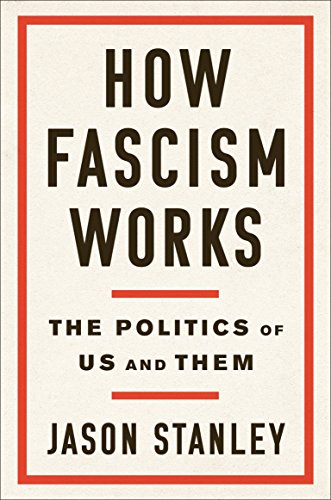
Let’s get real. What the news media and the pundits call populism these days is actually something more familiar to European historians. It’s fascism. And it’s high time for Americans to recognize that. Of course, this doesn’t mean that the politics of the Trump Administration represent full-blown fascism of the sort represented by Nazi Germany, Fascist Italy, or Imperial Japan in the World War II era. It simply means that Donald Trump and his counterparts in such countries as Brazil, Hungary, Italy, and Poland are using the political tactics and techniques pioneered by the fascists in the 1920s and 30s. And if they’re allowed to persist for long enough, the result may in fact be fascism, though that isn’t yet the case. That’s the line of argument Jason Stanley lays out in his compelling new book, How Fascism Works.
Estimated reading time: 3 minutes
How Fascism Works: the key strategies
As Stanley writes, “Fascist politics includes many distinct strategies: the mythic past, propaganda, anti-intellectualism, unreality, hierarchy, victimhood, law and order, sexual anxiety, appeals to the heartland, and a dismantling of public welfare and unity.” In How Fascism Works, he devotes a chapter to each of these concepts. And it doesn’t take a great deal of intellectual effort to see how closely Donald Trump and his counterparts in other nations now veering to the right are following this playbook.
How Fascism Works: The Politics of Us and Them by Jason Stanley (2018) 212 pages ★★★★★
How Fascism Works: The dangers
Here’s the crux of the matter: “The dangers of fascist politics come from the particular way in which it dehumanizes segments of the population. By excluding these groups, it limits the capacity for empathy among other citizens, leading to the justification of inhumane treatment, from repression of freedom, mass imprisonment, and expulsion to, in extreme cases, mass extermination.” Consider the trajectory of American politics from the 1970s to the second decade of the 21st century, from Richard Nixon to Donald Trump, and you’ll see this pattern clearly emerging. How else could we characterize the mass incarceration of African-Americans in Ronald Reagan’s and Bill Clinton’s “War on Drugs” and Donald Trump’s hateful rhetoric and malicious policies directed at refugees from the Middle East, Mexico, and Central America?
How Fascism Works: “Us” versus “Them”
“The mechanisms of fascist politics all build on and support one another,” Stanley writes. “They weave a myth of a distinction between ‘us’ and ‘them,’ based in a romanticized fictional past featuring ‘us’ and no ‘them,’ and supported by a resentment for a corrupt liberal elite, who take our hard-earned money and threaten our traditions. ‘They’ are lazy criminals on whom freedom would be wasted (and who don’t deserve it, in any case). . . ‘We’ are industrious and law-abiding, having earned our freedoms through work; ‘they’ are lazy, perverse, corrupt, and decadent.” Think for a minute: if Donald Trump had any facility with the English language, couldn’t you imagine him speaking exactly like that?
About the author
Jason Stanley is a professor of philosophy at Yale University. How Fascism Works is his fifth book. He is best known for his work on the philosophy of language and epistemology, often involving linguistics and cognitive science.
For additional reading
Check out the following posts:
- 15 books about Donald Trump and his impact on American democracy
- Top 10 nonfiction books about politics
- 20 top nonfiction books about history
This is one of the books I’ve included in my post, Gaining a global perspective on the world around us.
And you can always find all the latest books I’ve read and reviewed, as well as my most popular posts, on the Home Page.




























Great piece, thanks. And for the concluding resources too.
Here’s a related book. That there are people like Madeleine Albright who choose public service gives me hope for this beleaguered democracy.
https://washingtonmonthly.com/2022/05/23/madeleine-albrights-fascism-warning-is-more-pertinent-than-ever/